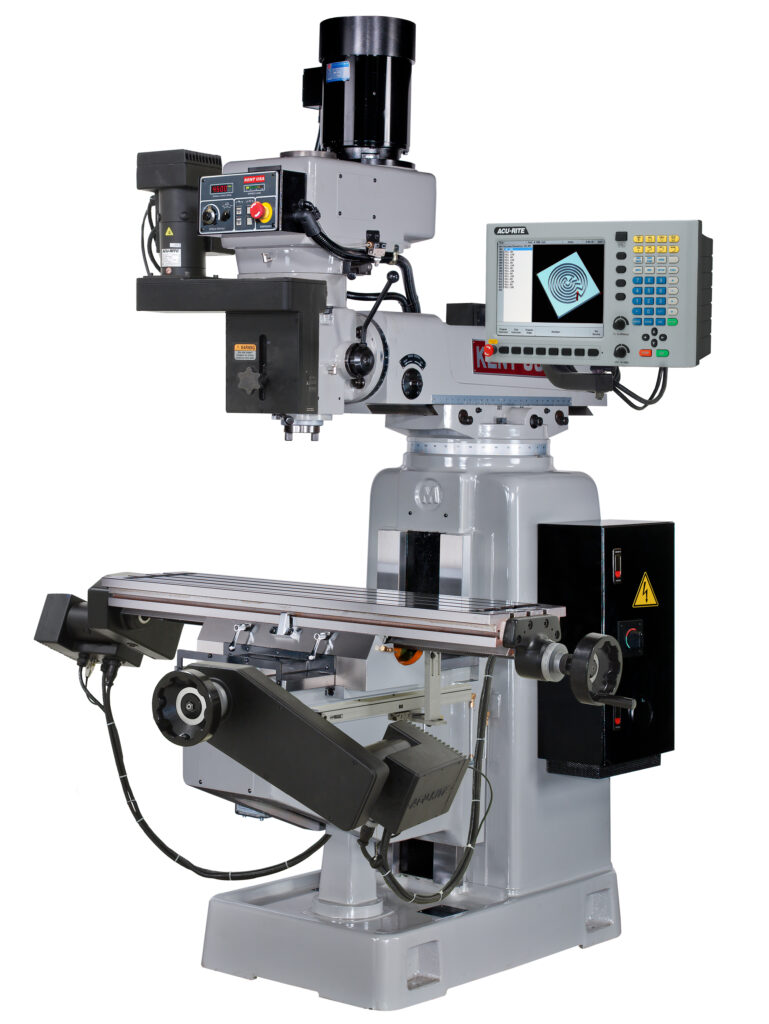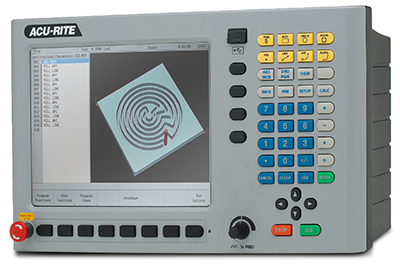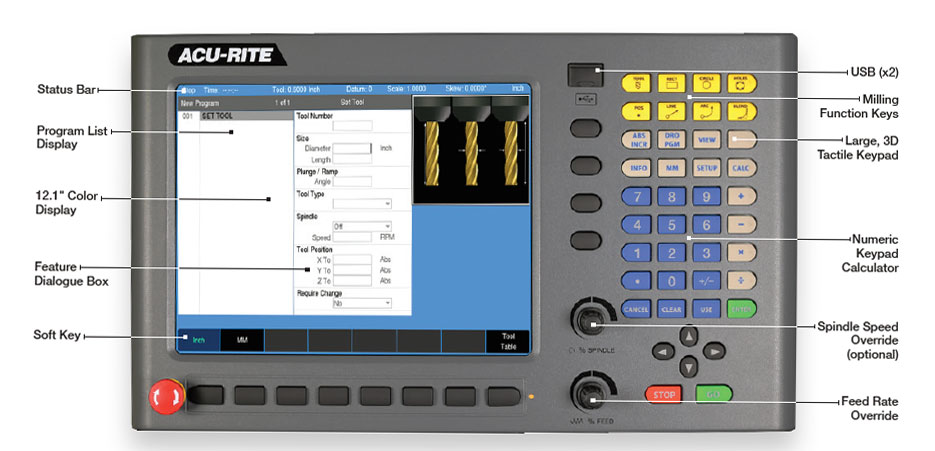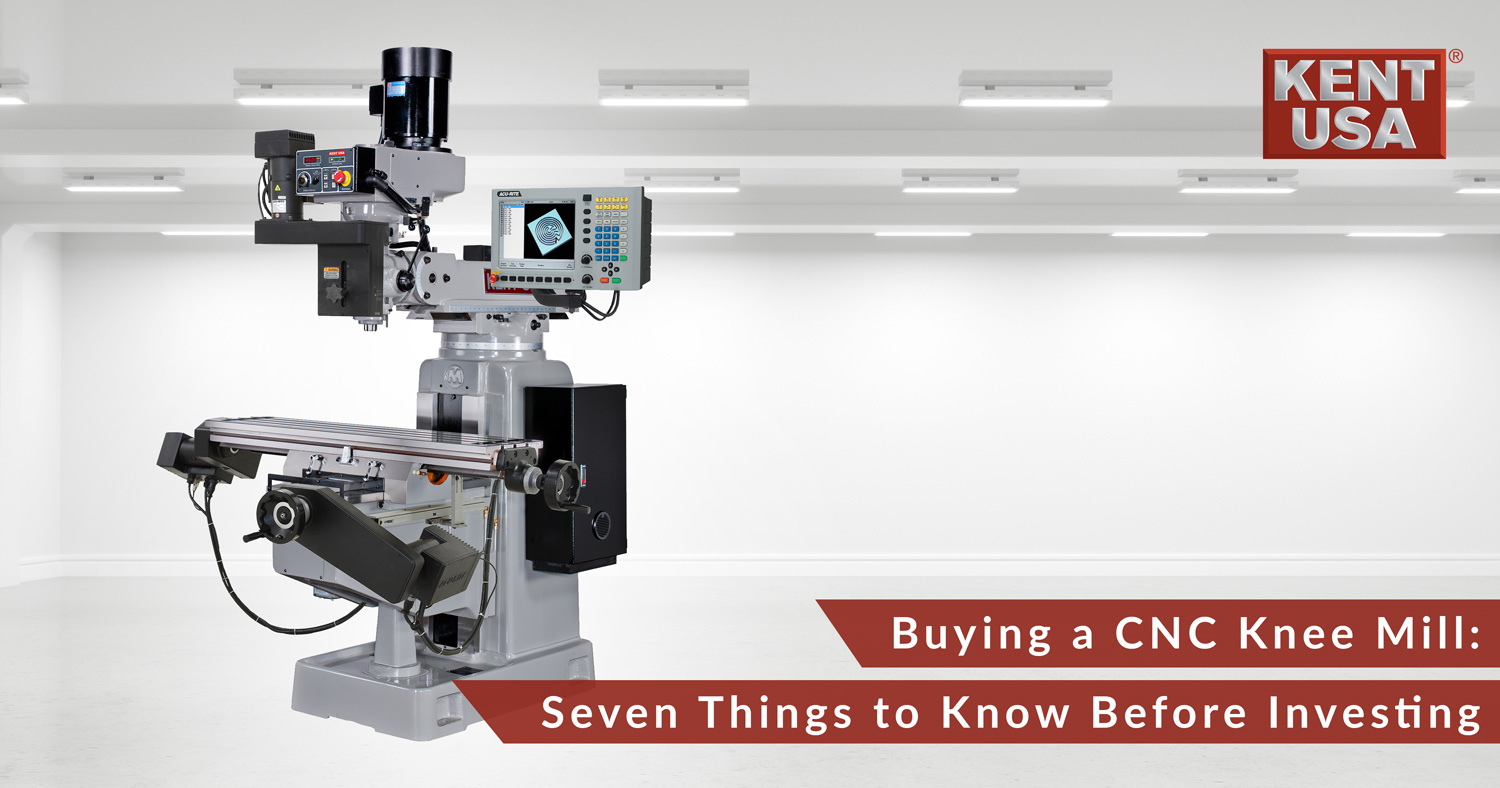Knee mills are perhaps the most versatile of all machine tools. Size permitting, it’s possible to produce practically any orthogonal part on a knee mill, especially when operated by a skilled machinist. Add CNC capabilities and you now have a machine that’s both highly efficient and easy-to-use, ready to crank out a few prototypes or mill and drill a skid full of production parts. Perhaps best of all, a CNC knee mill is a cost-effective means to achieve these goals, with a price tag that the smallest business and even many hobbyists and inventors can afford.
A Brief History Lesson
In 1936, engineers Rudolph Bannow and business partner Magnus Walstrom invented the knee mill. They called it a Bridgeport, after the city where they began building and selling their now-legendary machine. Larger fish in the machine tool ocean have since consumed The Bridgeport Machine company. Then they consumed it again, although the design lives on. In fact, machine tool builders have been copying—and in some cases, improving—the design ever since. And yet, buyer beware—whether CNC or manual, knee mills come in a range of sizes, capabilities, and especially quality levels. If you’re looking to make the wisest investment possible, it’s up to you to learn the differences between each. Keep reading.
CNC Knee Mill: What’s the Difference?
If you’re reading this article, you already know that the most recent and relevant of these knee mill improvements has been the addition of a CNC control. With this comes a variable speed spindle and servo motors to drive the different machine axes. Each of these gives the CNC knee mill a distinct advantages over their manual counterparts.
For instance, a modern control (the MILLPWR G2 from ACU-RITE is an excellent example) allows the machinist to operate the machine as either a manual knee mill equipped with an advanced DRO (digital read-out), in “full auto” mode, or as a combination of the two. It also provides consistently accurate results as well as complete flexibility to handle prototypes, high-volume work, and everything in between.
Pumping iron
Let’s talk about the metal behind the machine for a minute. Anyone shopping for a CNC knee mill should start by looking at its weight. As with any metalworking equipment, a heavy machine tool is generally a stable, accurate machine tool. For instance, Kent USA’s KTM-5VKF-E CNC weighs in at 3900 lbs., significantly heavier than other knee mills in this size range. Kent has also eliminated the standard Acme or 60-degree leadscrews that date back to the early Bridgeport days.
Instead, we’ve used CNC-style ball screws able to position repeatedly within 0.0002″, then matched them with equally accurate servo motors. And the machine itself is made of Class 35 cast iron, which has a much higher nickel content than the Class 25 used in competing knee mills. This increases its hardness, toughness, and vibration-reducing capability.
Smarter spindles
On a manual knee mill, if the spindle stalls due to a dull cutter or overly aggressive feedrate, the machinist is there to stop the machine and set things right. Some brands of CNC knee mill, however, will fail to recognize that the spindle has stopped. They’ll keep chugging along, unaware of the danger and quite possibly damaging the cutter, the machine, or even the machinist. That’s why it’s essential to look for what’s called a Programmable AMI spindle control function.
As its name suggests, this links the spindle rotation to the other machine functions, including the emergency stop button, so if anything goes awry, the machine shuts down safely all by itself. It also takes care of another situation. For those knee mills with high and low gears (which is most of them), the spindle changes direction when shifting between the two. The problem here is that it’s easy to overlook the fact that the spindle is now running in reverse, with possibly catastrophic results. Here again, the AMI circuit recognizes this and automatically changes spindle direction when shifting between gear ranges. Danger averted.
No flash in the pan
Not to pick on Bridgeport, because they did design a mean machine, but somewhere along the way, they and some of their competitors began looking for ways to reduce manufacturing costs. One of the easiest ways to do this is by replacing the machine’s hardened and ground way surfaces for ones that are flash chrome plated. Granted, chrome is quite hard, so this probably seemed like a good idea, but as many soon discovered, it tends to peel off after a few years. That’s why the most durable knee mills—CNC or otherwise—are made with hardened and ground ways that also employ a Turcite layer in between for lubricity. Keep them properly lubricated and they’ll last forever (well, almost).
Variable speed victory
Speaking of maintenance issues, there’s also the spindle head to think about. Bridgeports and many of their clones have long used a drive belt together with a pair of step pulleys to control spindle speed. This approach, however, is a pain in the neck. The machinist must stop the machine, loosen the locknut that holds the spindle in place, slide the head forward, move the belt to the desired spindle speed, and then repeat those steps in reverse order. It’s a good workout but not very productive.
As a result, machine builders began offering variable speed spindles. These use a pair of cone pulleys that open or close under spring pressure, thus forcing the belt to move up or down and adjusting the speed accordingly. As with flash chrome, it’s a cool idea, but all those moving parts wear out within a few years, leading to a costly rebuild. The moral of this sad story? Look for a CNC knee mill with an electronically-controlled inverter drive rather than a mechanical one. They’re simpler, quieter, run cooler, and are more energy-efficient. Simply put, inverters are basically bulletproof.
PWRing through
We mentioned the MILLPWR G2 earlier. It’s a very slick control, no matter whose iron it’s sitting on. Anyone who’s owned one will tell you how easy it is to use. Say you want to drill a hole. Bring up the drilling function, tell it what size drill and how deep it should go, and away you go. The same holds true for bolt-hole patterns, pocket routines, contouring, and much more. For more automated operation, you can string together a series of these “event modules” in whatever order you like. Then go get a cup of coffee. Tool lengths and diameters are easily adjusted, as are work coordinates. And for those who have a CAD system, it’s super easy to import DXF files.
The G2 can also be used as a DRO if you’re one of those who likes to turn the cranks. It has USB and Ethernet. It reads G-code and toolpath simulatio
n. The feature list goes on and on. If you have the opportunity, we encourage you to check out the G2. Even if it’s not at one of Kent’s factory-authorized showrooms. It’s fun to watch. It’s even more fun to use.

A CNC Knee Mill? Really?
We could go on, but that’s it in a nutshell. As with any piece of machinery, there’s training to consider. There’s also support, parts and service, and all the rest, but you already know that. What you might not know, however, is that some types of so-called “CNC knee mill” are actually sold as a kit that you or a retrofitter can install onto an existing machine. It’s a little like adding loud pipes and a fuel injection system to a vintage car. It might get you there, but unless you like to tinker with things and can deal with walking now and then, you’re better off buying a CNC knee mill that was built from the ground up. Give us a call and we’ll show you the difference.
Share this article:


